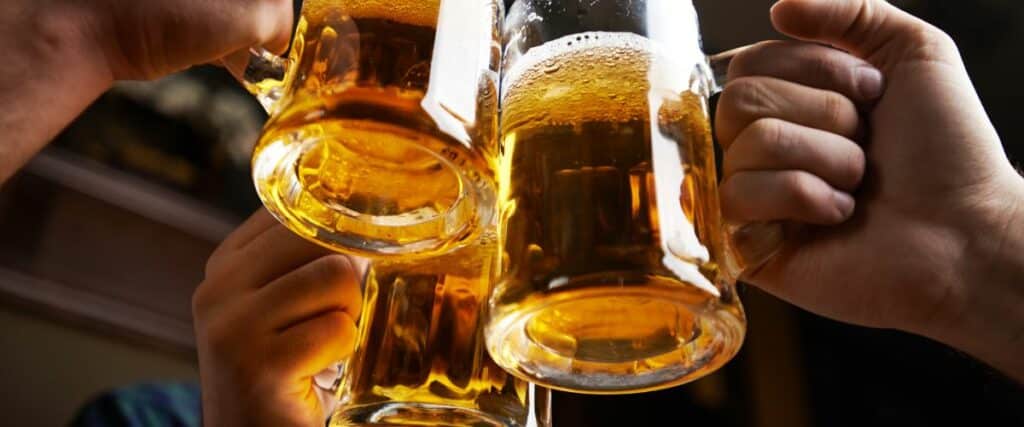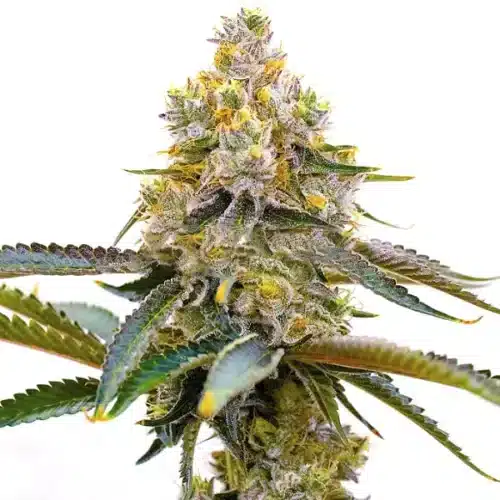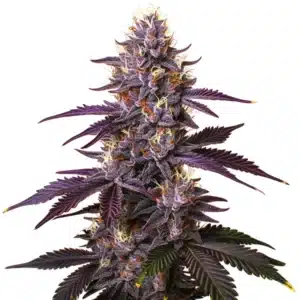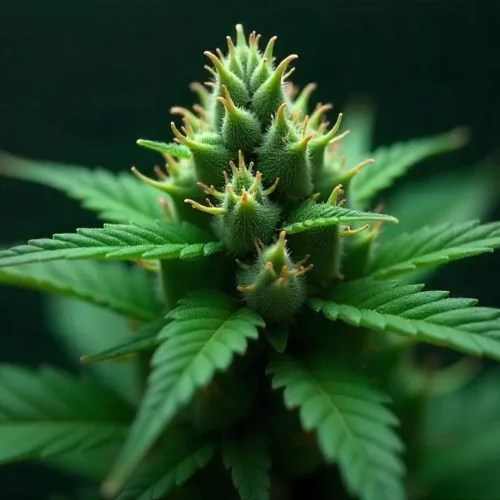In the dynamic landscape of artisanal drinks, a fresh player has surfaced: cannabis-infused beer. This groundbreaking concoction, incorporating elements from the cannabis plant, is reshaping the norms of conventional brewing, and presenting an unparalleled adventure to bold consumers.
This fusion, dubbed weed beer or cannabis-infused beer, epitomizes the convergence of the flourishing craft beer sector and the swiftly expanding legal cannabis industry. It signifies a harmonious blend of beer’s intricate, diverse tastes with the unique, frequently therapeutic attributes of cannabis.
Recommended Strains
Alaskan Purple
 THC: 15 - 20%
THC: 15 - 20% Type of seed: Feminized
Type of seed: Feminized Phenotype: Mostly Indica
Phenotype: Mostly Indica Day to flower: 8 - 10 weeks
Day to flower: 8 - 10 weeks
Amnesia Purple
 THC: 18% - 21%
THC: 18% - 21% Type of seed: Feminized
Type of seed: Feminized Phenotype: Mostly Sativa
Phenotype: Mostly Sativa Day to flower: 8 - 10 weeks
Day to flower: 8 - 10 weeks
History of weed beer
Though appearing innovative, the idea of beer infused with cannabis traces its origins back to ancient civilizations. Historical documentation suggests that societies like the Chinese and Egyptians explored blending barley and other grains with psychoactive plants, potentially including cannabis, in their brewing endeavors. However, the contemporary iteration of cannabis-infused beer is a recent phenomenon, emerging at the confluence of the craft beer movement and the increasing acceptance of cannabis.
The development of cannabis-infused beer has been marked by a trajectory of ingenuity and experimentation. Brewers have continuously honed their methods to craft a consistent and flavorful fusion of cannabis and beer. From initial experiments of simply incorporating cannabis into the brewing process to the advanced nano-emulsification techniques employed today, the evolution of cannabis-infused beer reflects the broader advancements in cannabis-based products.
Promos & Deals
The relevant of terpenes in weed beer
spray Terpenes serve as natural compounds present in diverse plants, notably cannabis, imparting distinctive fragrances and tastes to various botanicals, fruits, and blooms. Within cannabis, these terpenes play a crucial role in defining the plant’s unique olfactory and gustatory characteristics.
Spray Terpenes in Cannabis-Infused Beer
Within the realm of cannabis-infused beer, terpenes significantly enrich the overall sensory journey. They intricately contribute layers of depth and complexity to the beer’s bouquet and flavor profile, harmonizing with traditional hop and grain notes. Whether it’s the zesty essence of limonene, the earthy nuances of myrcene, or the spicy undertones of caryophyllene, each terpene lends a distinctive and memorable dimension to the beer-drinking experience.
THC vs CBD Weed Beer
In the realm of crafting cannabis-infused beer, the composition of the final product’s effects can be tailored by selecting strains with varying levels of THC and CBD. Strains rich in THC will yield a potent psychoactive experience, while those abundant in CBD will lean towards relaxation. Opting for strains high in both compounds offers a blend of both worlds.

The Influence of spray Terpenes on imbibing
Beyond enhancing the taste and aroma of cannabis-infused beer, emerging studies propose that terpenes might also impact the physiological effects of cannabis consumption. This concept, termed the “entourage effect,” posits that the collective interplay of cannabis compounds, including terpenes and cannabinoids, modulates the overall psychoactive and therapeutic outcomes.
In the context of cannabis-infused beer, this implies that the terpene composition could potentially shape the beer’s psychoactive effects, further enriching the drinking experience. Whether it’s a tranquil linalool-infused concoction or an invigorating pinene-laced brew, the realm of possibilities offered by terpenes in cannabis-infused beer is expansive and captivating.
Make Green Dragon For Weed Beer
A different approach can be taken if the goal is to produce a cannabis-infused beer with a potent THC effect. Rather than directly incorporating cannabis into the wort, one can opt for a method involving the infusion of cannabis in high-proof alcohol like vodka, resulting in what is commonly known as ‘green dragon’ extract. This extract is then introduced into the beer towards the end of the brewing process, just before the priming or conditioning phase.
Typically, the conditioning phase involves the addition of a priming solution consisting of sugar and water directly to the wort. When employing this method for crafting cannabis-infused beers, it’s recommended to blend the cannabis extract with the priming solution before incorporating the mixture into the wort.
During the addition of the mixture to the wort, it’s essential to stir gently and avoid splashing, as excessive agitation post-fermentation can lead to oxidation and staleness. After the mixture has been smoothly integrated into the wort, it’s left to carbonate for approximately a week.
Ideally, the green dragon extract should be prepared as close to the brewing time as possible, as prolonged storage may diminish its potency and result in a bitter taste. Contrary to common belief, ethanol tinctures of cannabis don’t need to steep for a month to extract cannabinoids fully; instead, a quick-wash method is preferred, with the cannabis steeping in the alcohol for a maximum of thirty minutes before straining and separating. The alcohol can then be partially evaporated until it reaches a syrupy consistency. It’s advisable not to completely evaporate the alcohol, as the liquid form of the green dragon facilitates its incorporation into the brew.
Determining the appropriate quantity of green dragon extract to add to the brew can be challenging. Excessive alcohol content in the wort can lead to yeast death and affect the priming process. While some wild yeast species may begin to die off with a wort alcohol content as low as 5%, Saccharomyces cerevisiae, the yeast commonly used in brewing, can tolerate alcohol levels as high as 17%.
By carefully controlling the potency of the green dragon extract, it’s possible to avoid reaching such high alcohol levels. Typically, a concentration of up to 0.5g of cannabis per finished bottle of beer is considered optimal, ensuring a balanced buzz from both cannabis and alcohol.

How to make weed beer in home
For beginners looking to simplify their homebrewing experience and avoid the complexities of the process, a simple approach involves purchasing a basic homebrewing kit, and following the instructions provided. As a final touch, dried cannabis flowers can be added a week before bottling.
More experienced brewers may explore a variety of recipes. Beginners often opt for ‘extract brewing,’ a method where malt extracts and hops are combined with water and heated to create wort, bypassing the need for mashing whole grains. This streamlined process requires less equipment and expertise.
Advanced brewers who value a traditional brewing approach typically favor the ‘all-grain’ method outlined earlier. Below are two recipes for producing five gallons, tailored for both extract brewing and all-grain brewing.
Extract method:
- 1lb caramel 20l malt
- 3lbs extra light dry malt extract
- 4lbs pale malt extract
- 6oz hops (Brewer’s yeast)
- 1-3oz cannabis (1oz high-quality, up to 3oz lower quality or trim)
All-grain method:
- 10lbs Belgian pale malt
- 1lb Belgian biscuit
- 1/2 lb caramel 20l
- 1oz hops 10-12% AABW
- 3oz hops 4-6% AABW
- Wyeast American Ale Yeast 1056
- 1oz high-quality cannabis
In both methods, it’s recommended to add cannabis when transferring the beer from the primary to the secondary fermenter, along with an ounce of hops—effectively employing a dry-hop technique. Conditioning the beer for one to two weeks before bottling is also advised.
Step-by-step Beer Brewing Guide
- Prepare the grains: Place malt grains in a zip-lock bag and gently crack them using a rolling pin, ensuring their outer shell breaks without crushing them entirely.
- Boil the grains: In a 30-liter pot, add 2 liters of water and heat it on the stovetop until it reaches 66–68°C. Include the cracked grains and boil for thirty minutes, stirring occasionally.
- Strain the grains: Use a strainer over a bowl to filter the mixture, discarding the grains, and pouring the liquid back into the pot.
- Add syrup: Incorporate light malt extract into the pot, stirring until fully dissolved. Then, increase the volume to 6 liters.
- Introduce hops: Place hops in a muslin bag, seal it, and add it to the pot. Boil, then simmer for an hour, stirring occasionally. Remove from heat, take out the hops, and let it cool.
- Sanitize and transfer: Follow product instructions to sanitize and rinse the syphon and fermentation bucket. Use the syphon to transfer the liquid from the pot to the bucket.
- Inoculate with yeast: Add slow-fermenting yeast to the bucket, allowing it to convert sugars into alcohol. Seal the bucket with a lid and airlock.
- Sterilize the muslin bag: Boil the second muslin bag for 10 minutes, then cool it slightly.
- Add the weed: Place the weed in the warm bag, seal it, and add it to the fermentation bucket. Secure the lid.
- Fermentation: Over the next ten days, yeast will ferment the mixture into beer. Shake the bucket lightly daily to agitate the cannabis.
- Bottle: After ten days, remove the weed bag, fill bottles from the bucket using a spigot, cap them, and refrigerate.
Health Effects and Concerns
Weed-infused beer, especially those incorporating CBD, is frequently lauded for its potential positive impacts on health. CBD, renowned for its anti-inflammatory properties, has been utilized to alleviate symptoms associated with a range of conditions such as anxiety, chronic pain, and epilepsy. When consumed in the form of beer, CBD can provide these benefits in a pleasant and enjoyable manner.
Potential Health Risks and Considerations
Despite the potential health benefits of weed-infused beer, it is not devoid of risks. The combination of alcohol and cannabis has the potential to amplify the effects of both substances, leading to heightened impairment. Furthermore, the long-term health consequences of consuming weed-infused beer remain incompletely understood, underscoring the necessity for further research in this domain.
Promoting Responsible Consumption
As is the case with any product containing cannabis or alcohol, responsible consumption is paramount. The potency of the weed-infused beer being consumed is crucial, as the levels of THC or CBD can vary significantly among products. Commencing with a modest quantity and gauging its effects before consuming more is advisable. Adhering to local regulations pertaining to cannabis and alcohol consumption is imperative, and driving under the influence should always be avoided. It’s essential to remember that the objective of consuming weed-infused beer should be enjoyment and relaxation, rather than excessive indulgence.

What Beers Pair Best With Cannabis?
Step into any bar, and you’ll encounter an array of beers, ranging from widely available commercial lagers to the unique creations of local microbreweries. The vast variety of beers mirrors the diversity found among strains favored by cannabis enthusiasts. But which combinations deliver the ultimate sensory experience? Ultimately, it boils down to personal taste. Nonetheless, here are some suggestions to kickstart your exploration:
- Lager: Renowned for their crisp, clean profiles, lagers provide an ideal canvas for THC infusion and flavorful terpenes. Their subtle flavors allow the distinct characteristics of specific strains to come to the forefront. Additionally, their moderate alcohol content complements the psychoactive effects of cannabis.
- Stout: Offering a more indulgent experience, stouts boast dark, malty, and earthy notes that pair harmoniously with certain cannabis varieties. Stout beer brings forth hints of coffee and chocolate and typically carries a higher alcohol content compared to lagers.
- Pilsner: Refreshing, light, and crisp, pilsners, although a type of lager, distinguish themselves with a hoppy and spicy flavor profile derived from a unique yeast strain used in fermentation.
- Indian Pale Ale (IPA): Recognized for their pronounced hoppy bitterness, IPAs are suited for those with adventurous palates. They complement earthy or sweet cannabis strains, offering a contrasting yet delightful taste experience.
Is it advisable to combine cannabis with alcohol?
It’s common for individuals to mix cannabis and alcohol. Many people enjoy having a beer along with a joint, and if it’s done in moderation, it can be a positive experience. However, scientific research suggests that consuming both substances together can amplify their effects on each other.
This implies the importance of using both substances in moderation. Consuming too much alcohol and weed simultaneously can lead to an unpleasant experience, where one might become excessively intoxicated and high, making it difficult to enjoy the evening. Therefore, when brewing cannabis-infused beer, it’s crucial to keep this in mind.
For those who consider themselves enthusiasts of cannabis or beer, embarking on such a project could be quite enjoyable. Moreover, cultivating your own cannabis and hops at home would add an extra layer of excitement to the process.
Have you attempted to create your own cannabeer? If so, which methods yielded the best results for you, and what advice would you offer to those attempting to brew cannabis-infused beer for the first time? We’d love to hear from you in the comments!


















